Arkitekt | origin story
Construction of Arkitekt:
I grew up in a fundamentalist Christian environment filled with laws for how to live. I learned early on that to be loved, I must be good, and to be good, I must get things right. There were no spaces where it was ok to question, to not know, or God forbid, to try on different ways of thinking or being in order to find a shape that fit. My identity was performative, a patchwork of wise and necessary adaptations I made to survive, that over time turned into habituated tendencies, keeping me in a diminished version of myself. I was stuck in this maladaptive shape for many years, living out the self-fulfilling prophecies of my perceived limitations, fearful of judgment, captive to my fragmentation.
There were times when I would feel the disconnection between my longings and my life, but without a space to explore the dissonance, all that seemed available was a brutal binary: give up or blow up. I could stay in a shape that felt increasingly small and lifeless, bartering my aliveness for a form of safety, or I could try to free myself through blowing up my life, at high collateral damage to everyone I loved. Given this duality, I chose self-martydom. Until, like Anais Nin says, “The day came when the risk to remain tight in the bud was more painful than the risk it took to blossom.”
The year was 2011. I was pregnant with my 4th child in five years. The fundamentalist Christian system I grew up in was no longer giving me life and my marriage had undergone a recent huge upheaval. I was a thirty-one year old professional actor, opera singer, and writer stuck in a good girl story: teaching online for two different universities, running two multi-level marketing businesses so I could be a “stay-at-home-mom,” teaching dystopian lit through virtual high school English classes, and teaching for a homeschool co-op, all the while, as one of my friends called it, dripping with children. I felt isolated and overwhelmed, chafing inside of a life that was not an expression of who I knew myself to be, and yet to speak about this would mean I had to admit the disconnection out loud, and that would mean accountability because once you hear the truth, you can’t unhear it. And what would the aftermath cost? Almost despite myself, I reached out to other women in my community who I suspected might be feeling the same, even though we weren’t talking about that, and invited them to gather for a few hours on a Saturday morning.
What materialized was a place where people could shapeshift between what was dying and what was being born, a space for asking questions and deconstructing identities, without having to attach our explorations to answers, timeline, or agenda. One place where we didn’t have to know what we were doing,
I was 39 weeks pregnant with my fourth child.
Deconstruction of Arkitekt:
Arkitekt went underground while I birthed a baby we named Phoenix, and while we pieced life back together, culminating in a cross-country move eight months after the fire to a city of strangers. I became very depressed, and in a desperate effort to find my way back to myself, did what I had done prior to the fire-invited women to gather and listen to each other’s stories. That circle turned into monthly drop-in circles for the next year and a half. By Fall 2014, our circles became a semester-long commitment- monthly 4-hour gatherings guided by two volunteer co-facilitators. Over the next few years, we grew to 17 circles with over 30 facilitators, started a circle in Scotland and Washington D.C., launched a facilitator training program, established a five-member volunteer Core Team that met weekly, held community events, piloted an Arkitekt for men, teens, college students, young moms, matriarchs, and one for teachers, and became a not-for-profit.
And then my baby born out of the fire, my Phoenix, now seven years old, was diagnosed with lymphoma. The day of his diagnosis, I walked away from Arkitekt. Another burning.
Reconstruction of Arkitekt:
It took four years for Arkitekt to resurrect, a time where I apprenticed myself in service to my son’s healing and recovery from cancer (he is now four years in remission), and then stewarded his weakened immune system through COVID. I returned to teaching high school full-time, periodically attempting to start circles again, but it took losing my teaching job last June due to lack of funding (another burning) that gave me the courage to move forward. A few weeks after that, I was introduced to Michael Humphrey, a researcher from Colorado State University, by a former Arkitekt facilitator. Michael was interested in the role listening plays in holding, shaping, and co-constructing the life narrative of another. After hearing about Arkitekt Circles, he was eager to collaborate. We brainstormed ideas, and he sent a student on his research team to interview me for an episode for his podcast, Storylisteners. He and a graduate student, Katie Mitchell, interviewed me about my curriculums. Katie conducted a textual analysis of my guiding materials for facilitators and members, while Michael interviewed participants from previous circles.
I (re)launched Arkitekt in March 2024.
Currently, I facilitate three in-person Arkitekt circles, while continuing to research and work on the Arkitekt curriculum. We are also piloting an Arkitekt circle for men in spring 2025.

